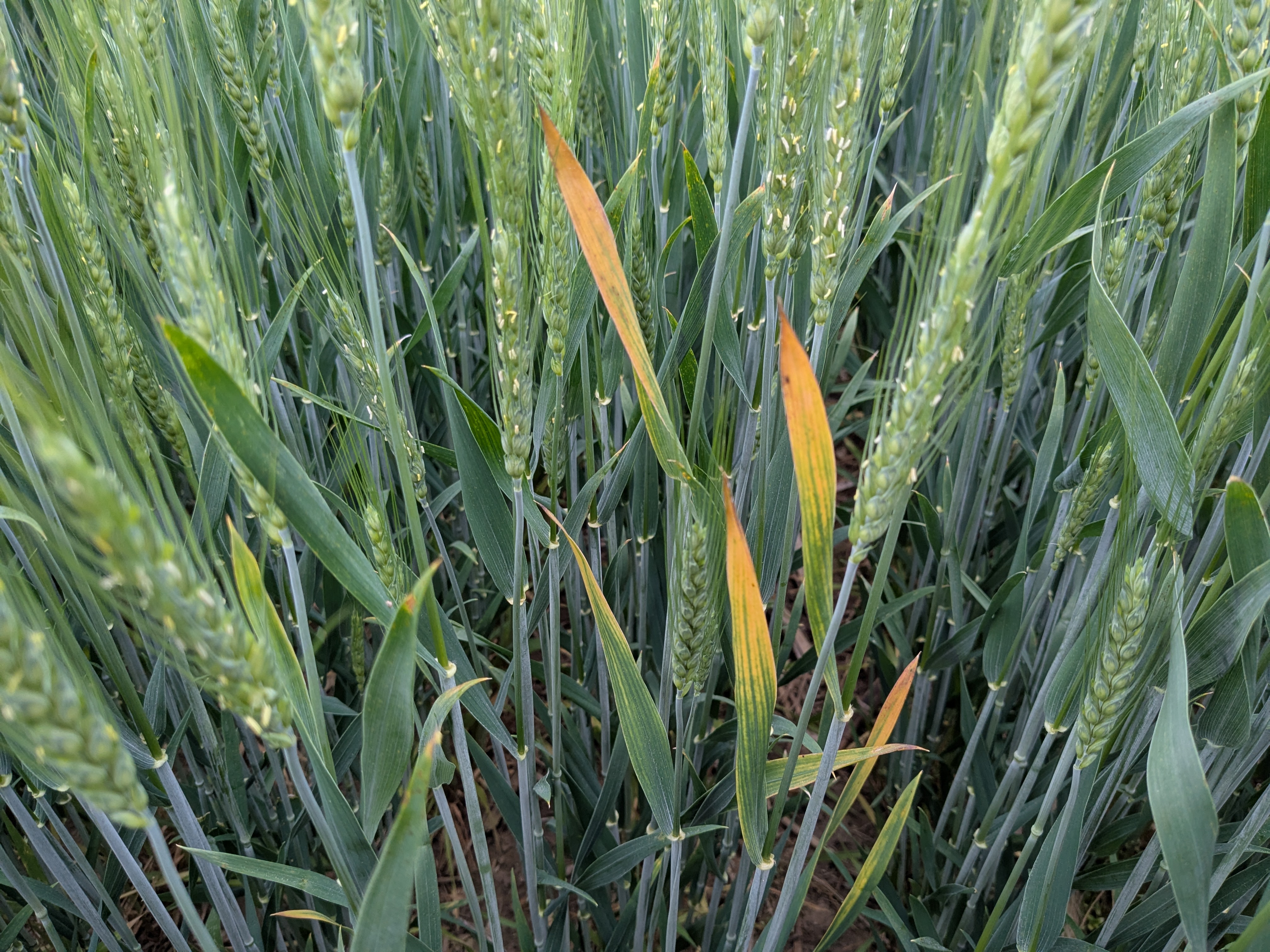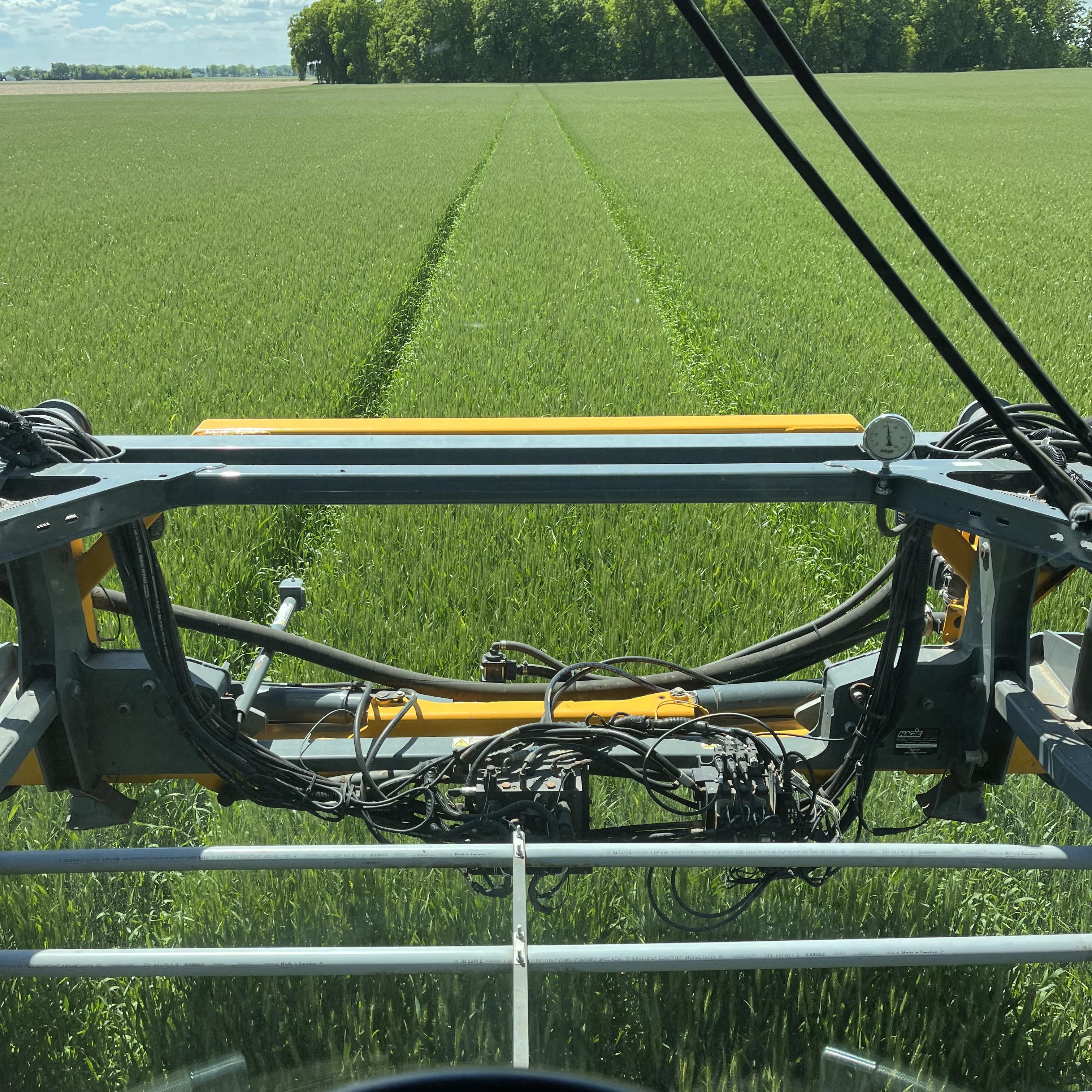Wheat Watchers Week of May 26, 2025
See how the wheat crop is progressing across the state this week.

Enjoy this installment of Wheat Watchers! This report will come out weekly until most of the state hits flower and then will switch to bi-weekly until most of the state has harvested. This report is only possible because of our agribusiness and farmers who participate as wheat watchers. If you are interested in being a wheat watcher, especially if you see your area isn’t represented, please reach out to Michigan State University Extension field crops educator Jenna Falor at falorjen@msu.edu.
Overall, this week reporters are seeing wheat stands in good condition with growth stages ranging from Feekes 9 to 10.5.4.
Southwest region
We had two wheat watchers reporting from the southwest region: one from Barry County near Hickory Corners and one from St. Joseph near Centreville. Wheat in both counties is at Feekes 10.5.1 (beginning flower) to Feekes 10.5.3 (flowering complete). Applications for head scab have been occurring over the past week across the area. The watcher near Hickory Corners is seeing some barley yellow dwarf virus at very low levels.

Southeast region
We had two wheat watchers reporting from the southeast region: one in Jackson County near Jackson and the other from Monroe County near Ida. Both watchers are reporting wheat is Feekes 10.4 (heading ¾ complete) to Feekes 10.5.1 (flowering just beginning). The watcher near Ida is starting to spray for head scab on an earlier variety but the rest of their fields are a couple days away yet. There is rain in the forecast for later this week that will probably carry the crop to the end as long as it’s a good rain. The watcher near Jackson says there is a break in the rain that allowed some fungicides to go on. They are seeing some leaf rust starting, some powdery mildew and Septoria leaf spot and some cereal leaf beetle feeding.

East central (Thumb) region
We had one wheat watcher reporting from the Thumb in Huron County near Ubly. Wheat is at Feekes 10.1. Overall, wheat looks good. There is some light disease pressure being seen but not enough for most to warrant a flag leaf fungicide application.
Central region
We had four wheat watchers reporting from the central region: two from Saginaw County, one near Chesaning and one near Richville, one from Ingham County near Mason and one from Gratiot County near Middleton. The watchers from Saginaw County report similarly, with wheat near Richville at Feekes 9-10.5 and wheat near Chesaning at Feekes 10.4. The watcher from Gratiot County reports Feekes 10-10.1. The watcher near Mason reports Feekes 10-10.4, with early maturity varieties expected to flower before the end of the week.
Overall, this group of watchers says wheat looks nice with very low levels of disease. The next field work to occur will be for head scab applications within the next week, most likely.
West central region
We had one wheat watcher reporting from the west central region in Mason County near Scottville. Wheat is at Feekes 9 with most field work currently complete, but some micros may still get applied. There are not many issues being seen when scouting. The west central region has been cooler than normal over the last seven days with 27 growing degree units (GDU) compared to a historical average of 82 GDUs and a 2024 average of 120 GDUs.
North region
We had no wheat watchers reporting from the northern area this week.
Notes from Dennis Pennington
There has been quite a bit of powdery mildew found in wheat fields. Wheat streak mosaic virus can be found in most fields. So far, stripe rust and leaf rust have not been a problem. The Fusarium Risk Tool currently shows low to moderate infection risk for head scab in Michigan. The cool weather has been good for the wheat. Most fields have adequate moisture and are doing well. Based on the weather pattern we have been in, pay particular attention to the Fusarium Head Blight risk tool. This may be the year when fungicide will need to be applied at flowering.
This work is supported by the Crop Protection and Pest Management Program [grant no 2024-70006-43569] from the USDA National Institute of Food and Agriculture. Any opinions, findings, conclusions, or recommendations expressed in this publication are those of the author(s) and do not necessarily reflect the view of the U.S. Department of Agriculture.



 Print
Print Email
Email




